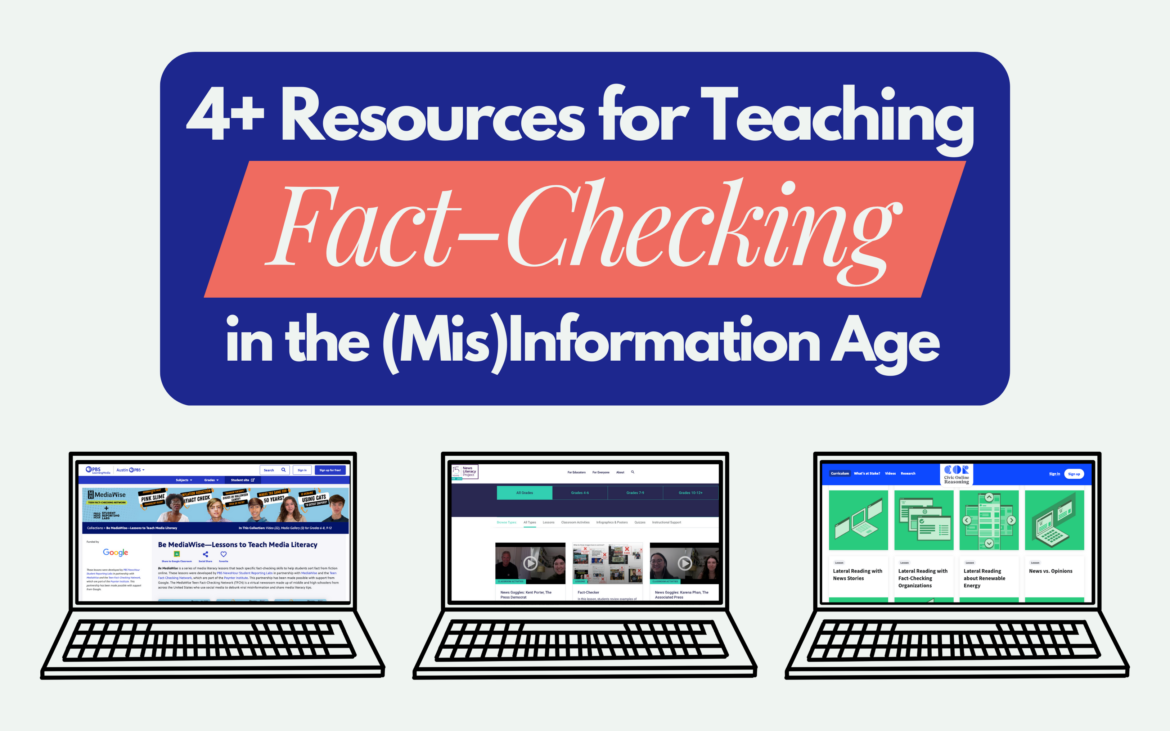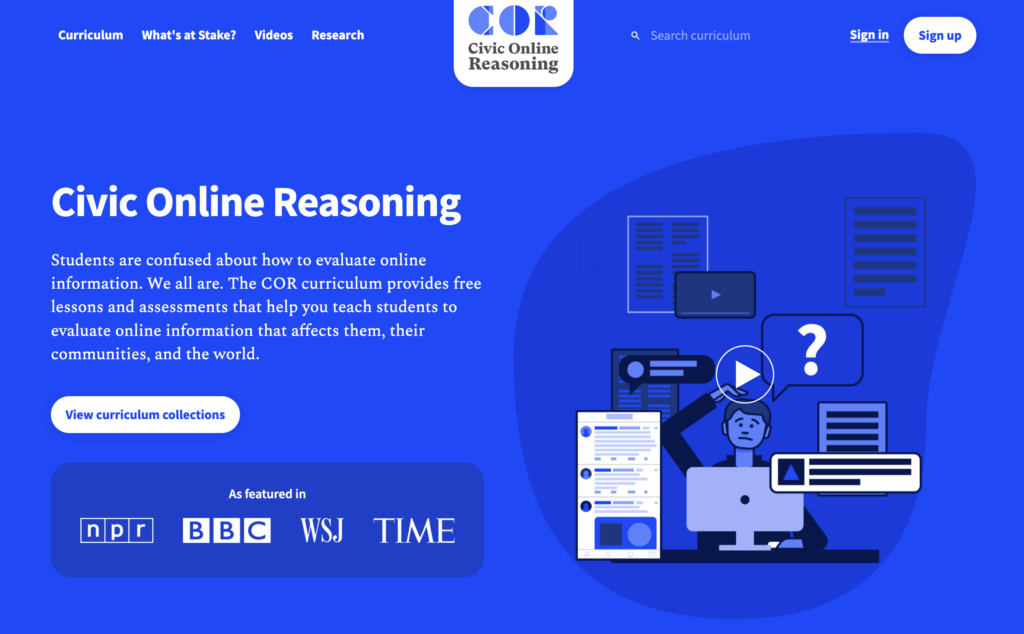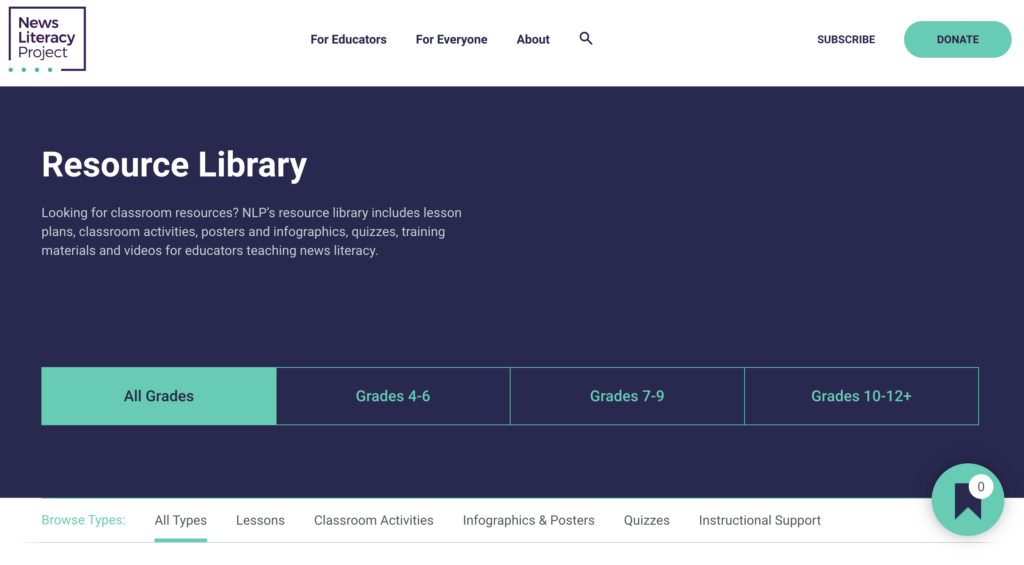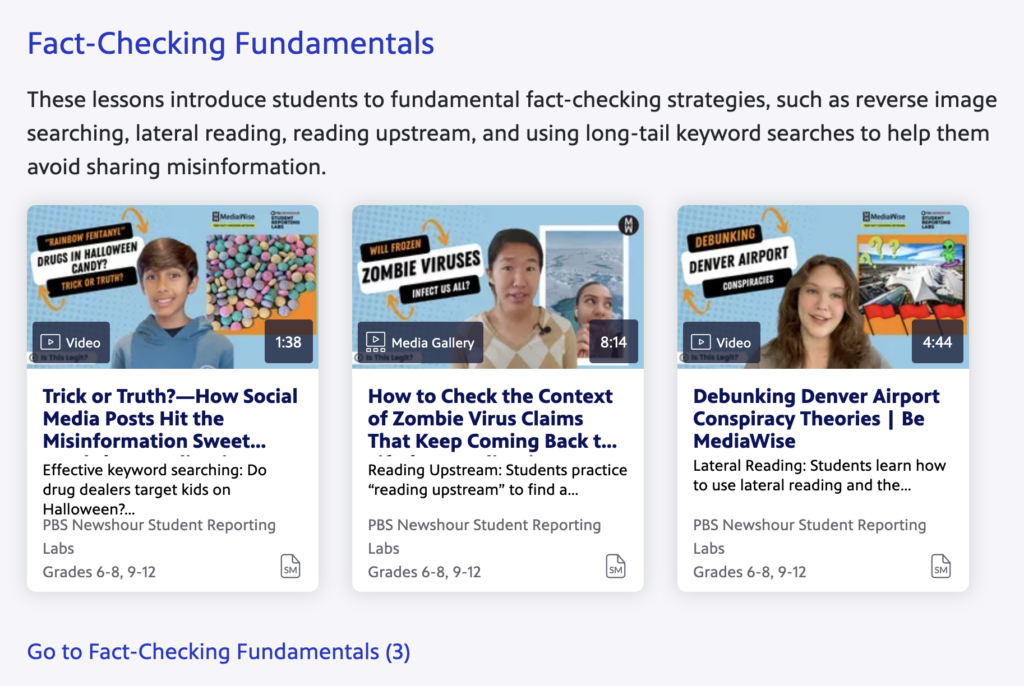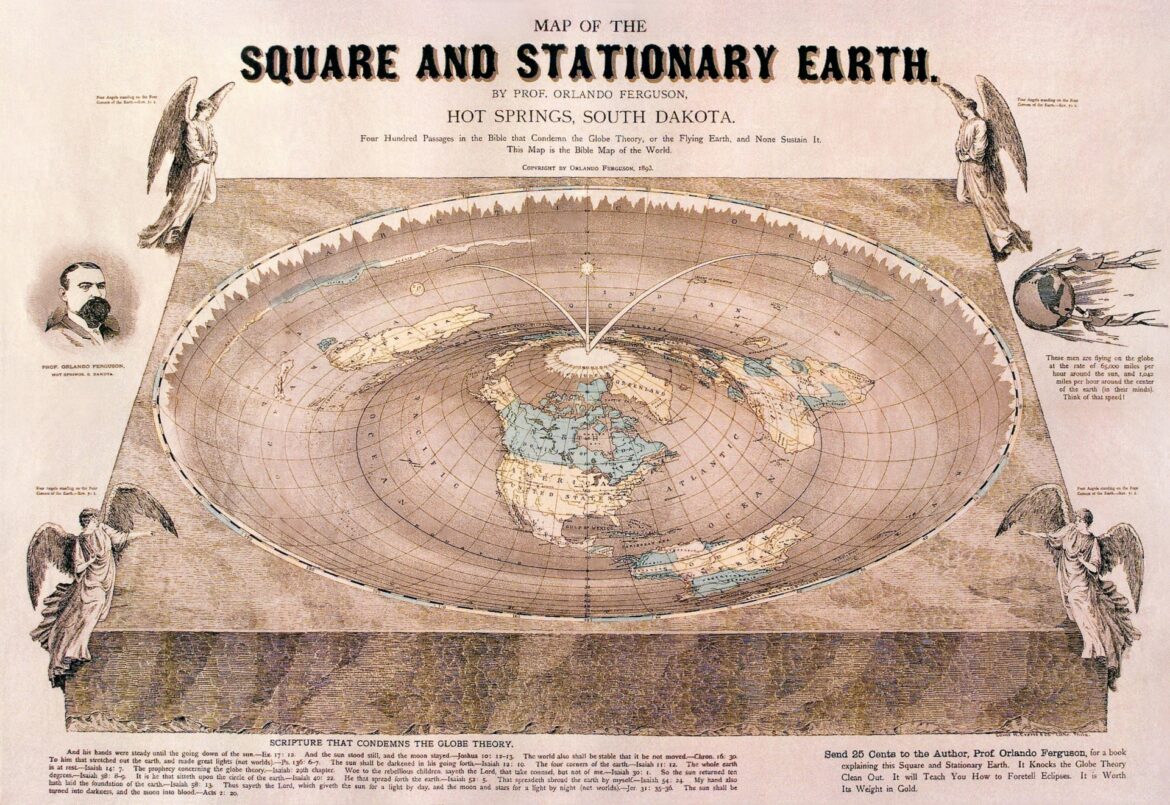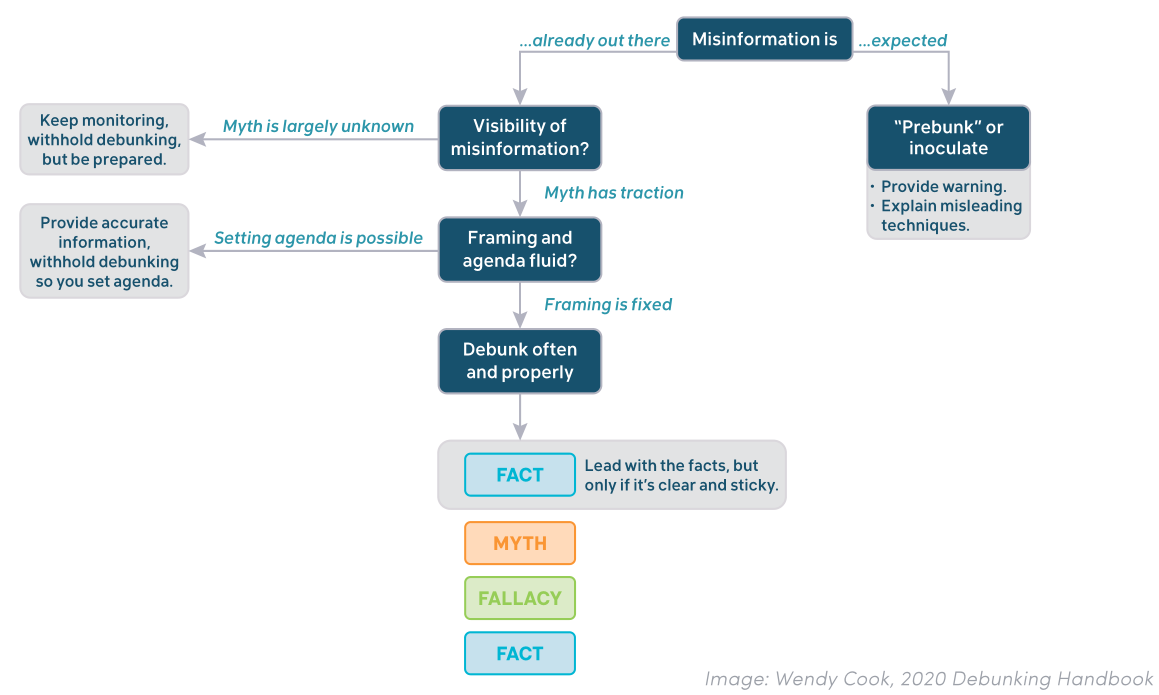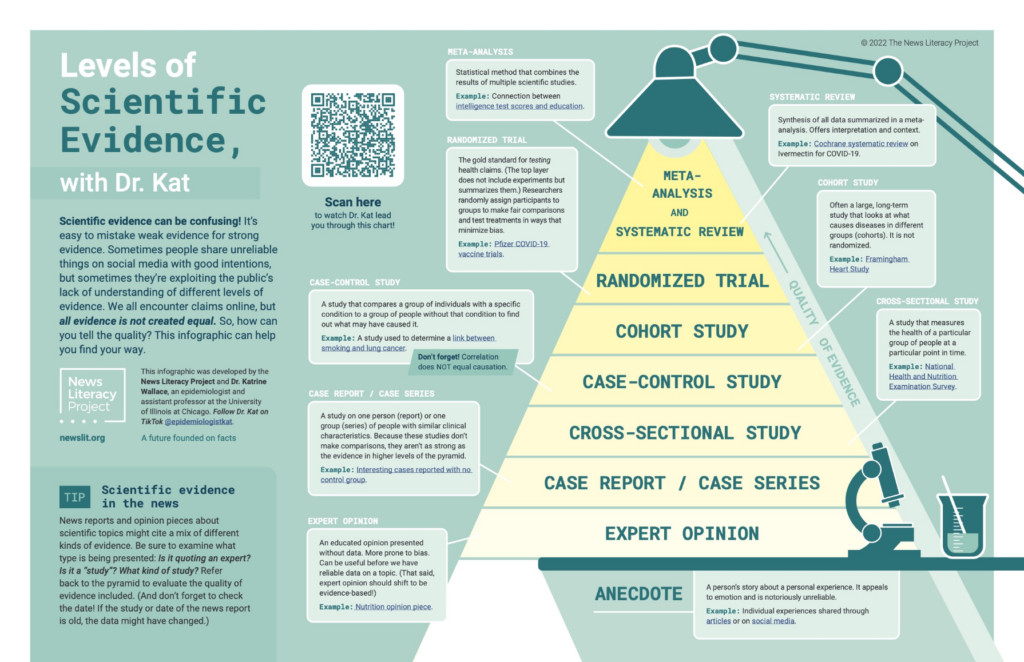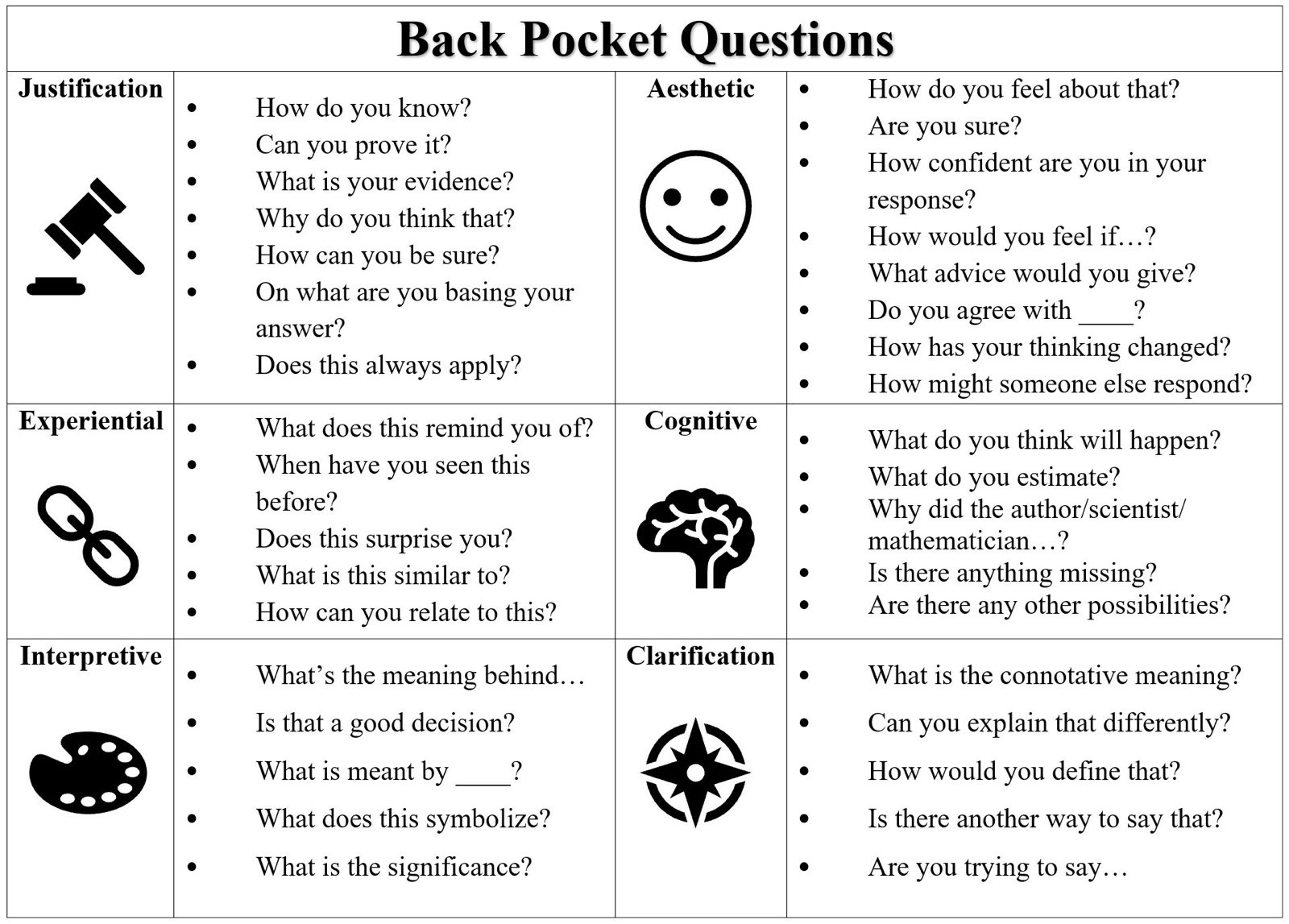As a new wave of students enters the classroom, educators have an exciting opportunity. This year, equip students with lifelong critical thinking skills by incorporating news literacy into your lesson plans.
In today’s media landscape, marked by rapidly advancing artificial intelligence technology and emotion-inducing current events, the ability to verify information and analyze sources is more important than ever. News-literate students think for themselves, assess the quality of information they are consuming and are prepared to actively participate in civic life. They can distinguish between news and opinion, original social media accounts and branded content, and genuine video and AI-generated deepfakes.
The News Literacy Project is here to streamline the process of building news literacy into your curriculum, lessons and activities. NLP’s free resources, from virtual lessons to newsletters to infographics, will deepen students’ knowledge of how to think (not what to think). This back-to-school season, save time and energy by starting with these key tools.
1. Subscribe to The Sift®.
The Sift is a free weekly newsletter for educators delivered during the school year that offers a rundown of the latest topics in news literacy, including trends and issues in misinformation, social media, artificial intelligence, journalism, and press freedom. It provides discussion prompts, teaching ideas, and classroom guides.
2. Assign “Introduction to Algorithms.”
Be one of the first to explore a newly revamped lesson on NLP’s free e-learning platform, the Checkology® virtual classroom. “Introduction to Algorithms,” hosted by journalist Mia Sato and a pesky character called “Algo,” will help students understand the role of algorithms in their lives and boost their news literacy training with key information about how search engines and social media platforms work. This award-winning platform also offers 19 additional lessons, and dozens of activities and challenges, that address topics like misinformation, conspiratorial thinking, and press freedom. Most lessons and activities require between 15 and 60 minutes.
Click here to learn more about Checkology.
3. Download the “Breaking news checklist.”
The “Breaking news checklist” gives six straightforward tips for navigating fast-moving news stories. When big news breaks, it can be hard to cut through the noise and find accurate information. Misinformation thrives during times of war, natural disasters and upheaval, and bad actors often spread falsehoods for cheap engagement on social media. Display and discuss this infographic in your classroom to help students process the latest current events and avoid rumors, falsehoods, and bad actors.
4. Download “6 things to know about AI.”
“6 things to know about AI” provides an overview of how artificial intelligence technology works and offers six news literacy takeaways to keep in mind as these tools evolve. Although the technology is not new, dramatic advances in generative AI continue to transform our information landscape. This infographic will help students carefully consider what they accept as authentic. Hang or distribute the infographic to guide a discussion about AI with students.
5. Bookmark the Educator Resource Library.
An essential for any news literacy educator, NLP’s resource library includes lesson plans, classroom activities, quizzes and infographics to make the job easier. You’ll find frameworks for news literacy curricula, video interviews with journalists and podcast listening guides to seamlessly build critical thinking skills into any unit.
Want More News Literacy Resources?
One more thing… Want to download all of these must-have news literacy resources and more in a convenient check list? Check out the Back-to-School Guide, which groups NLP’s most timely tools for educators to build a foundation for future-ready students.

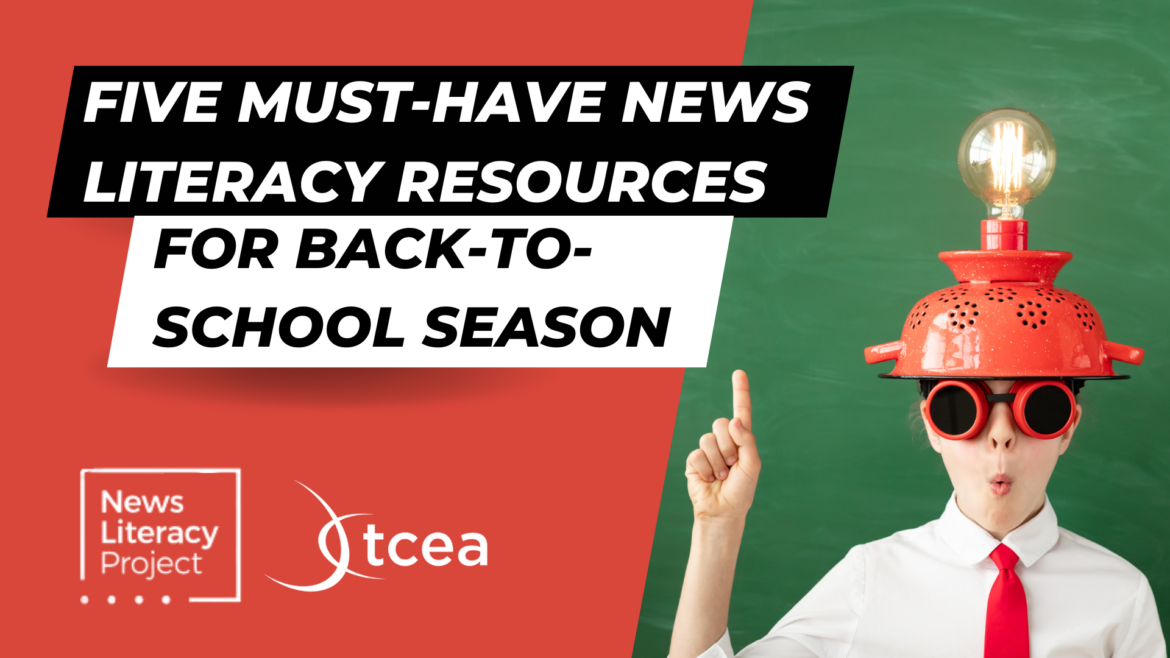
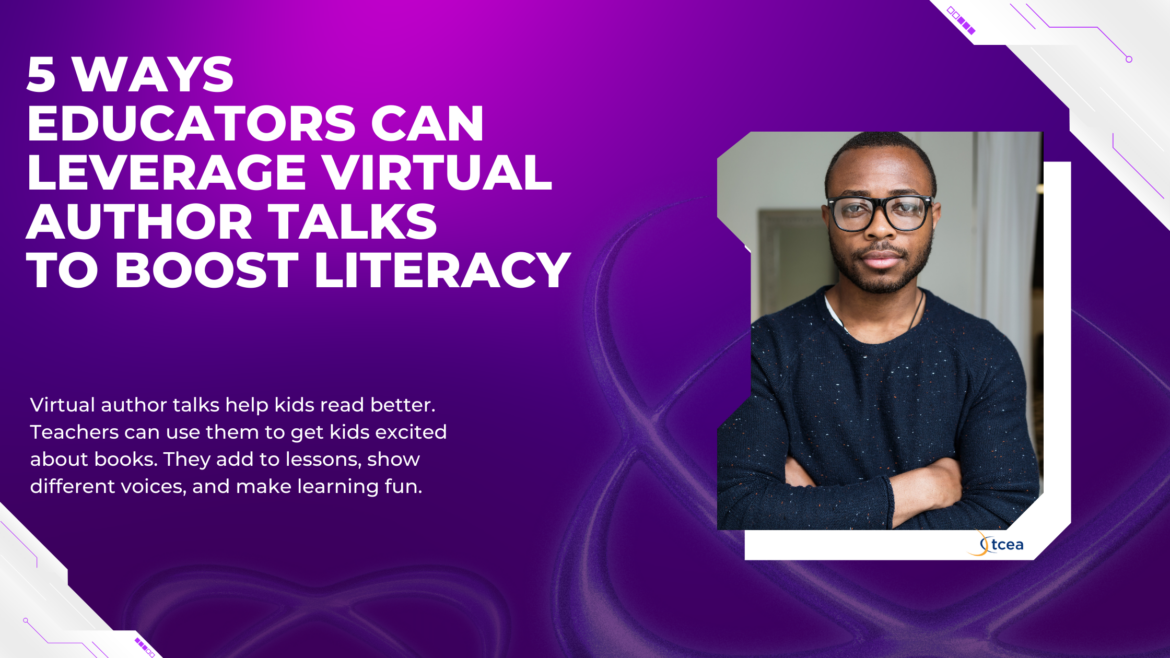
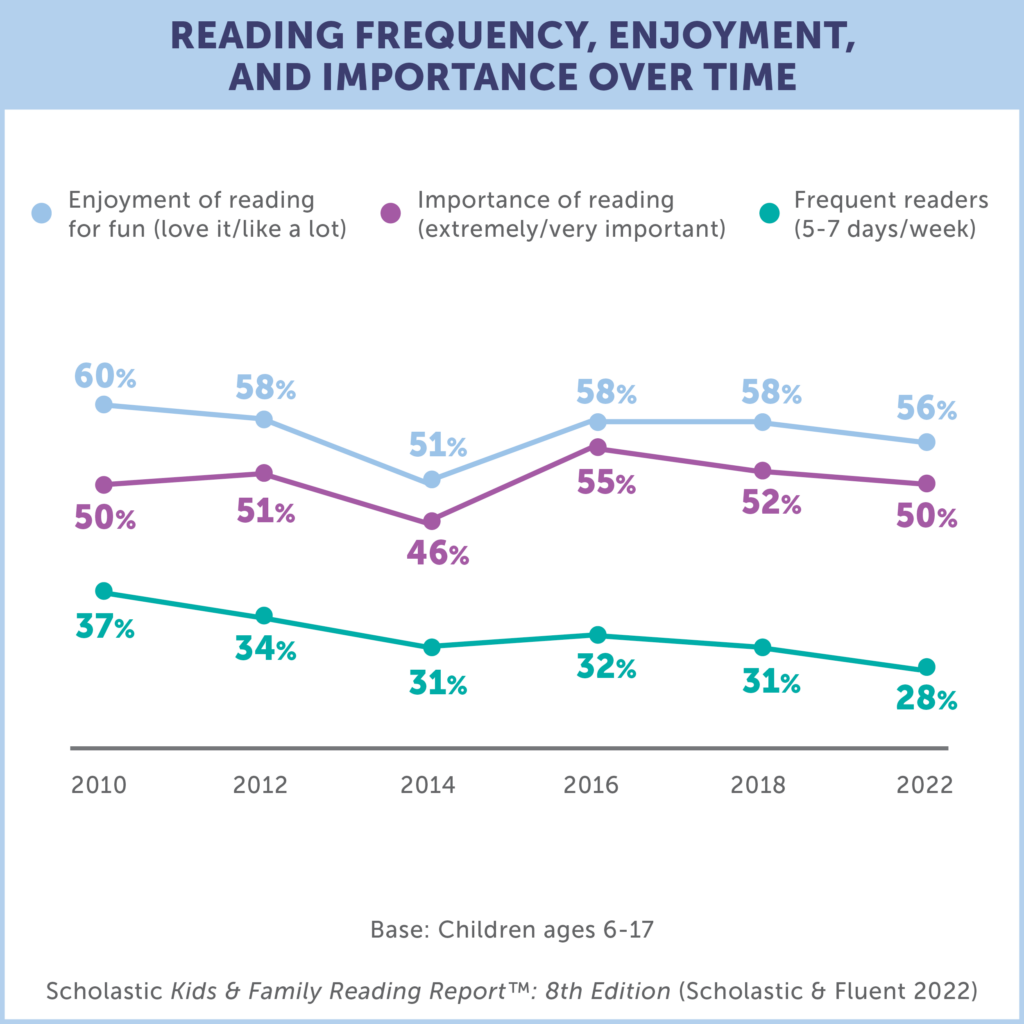
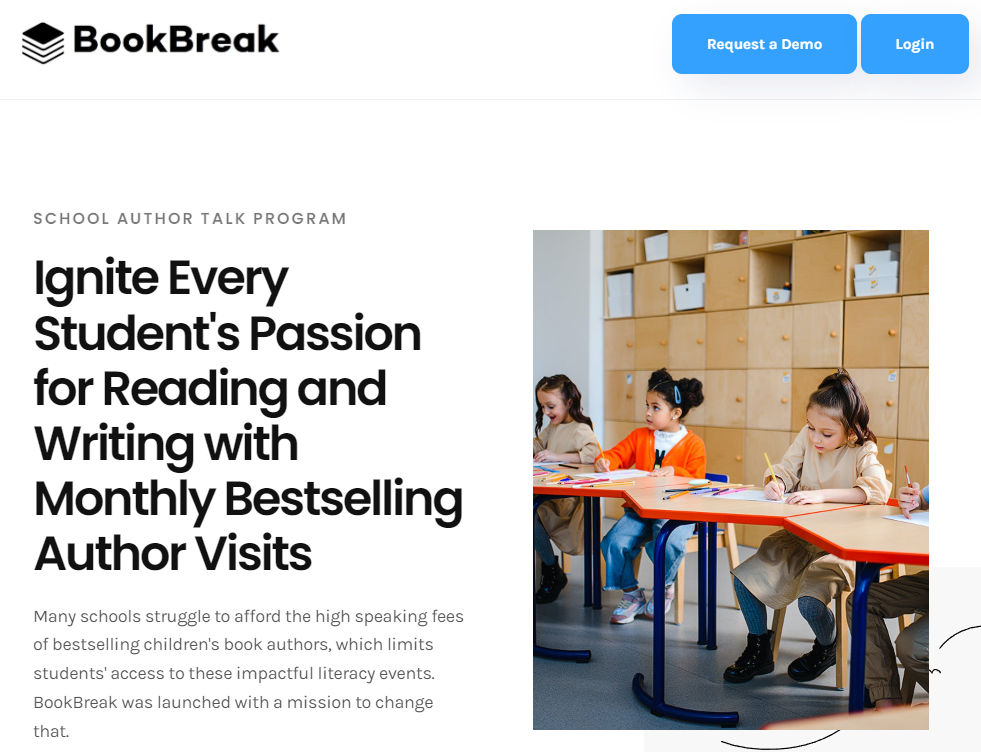
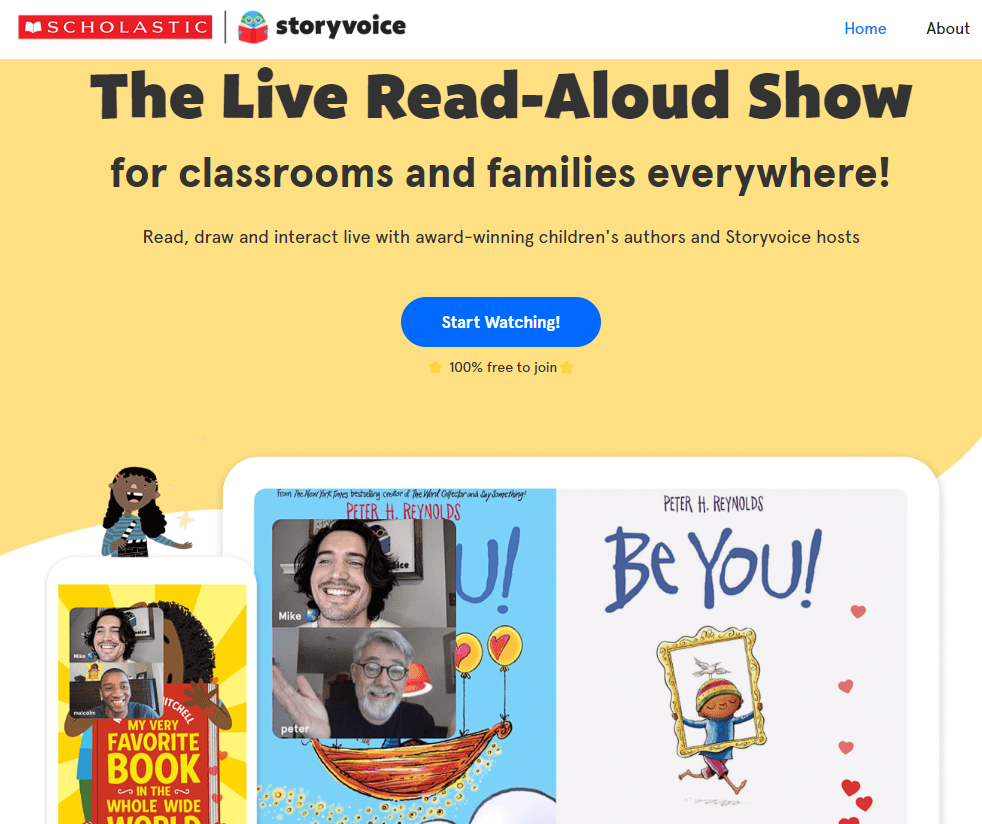
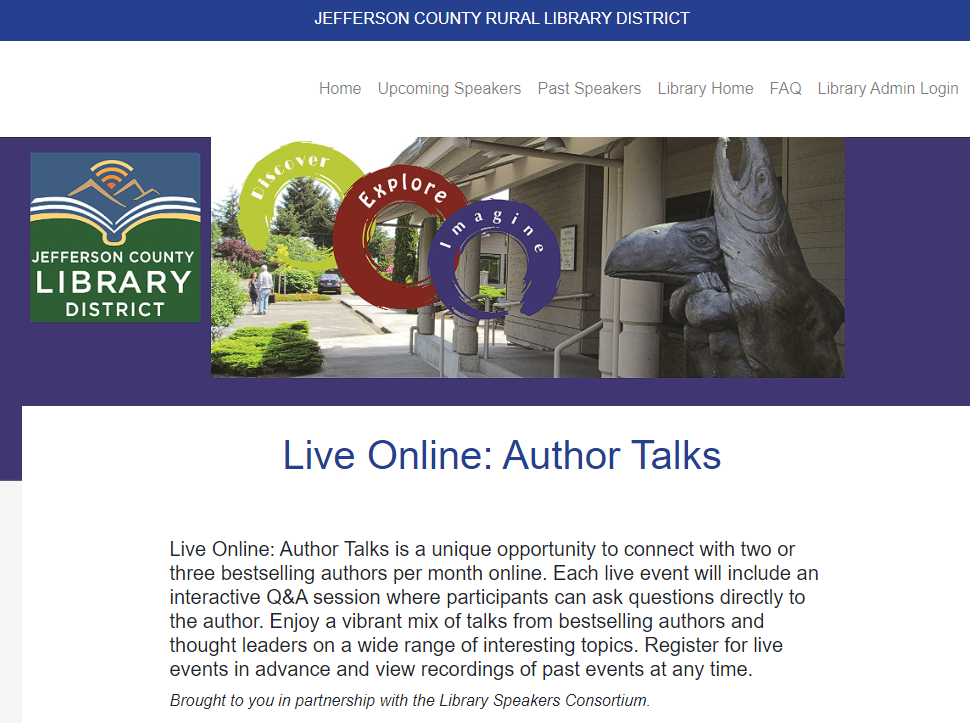
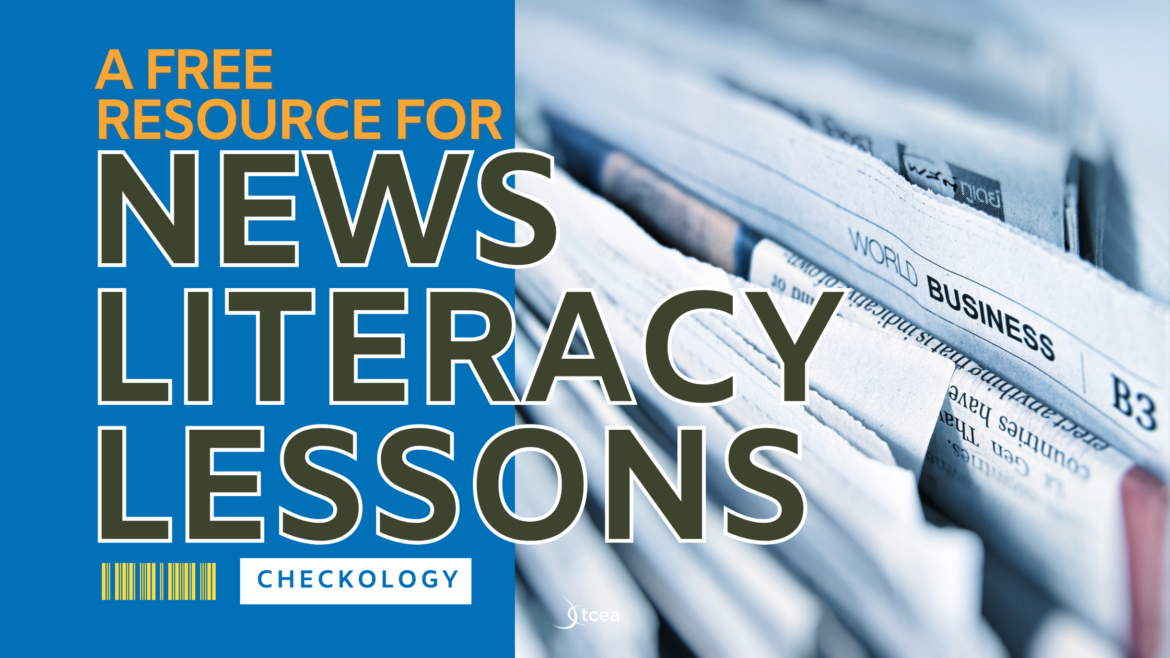

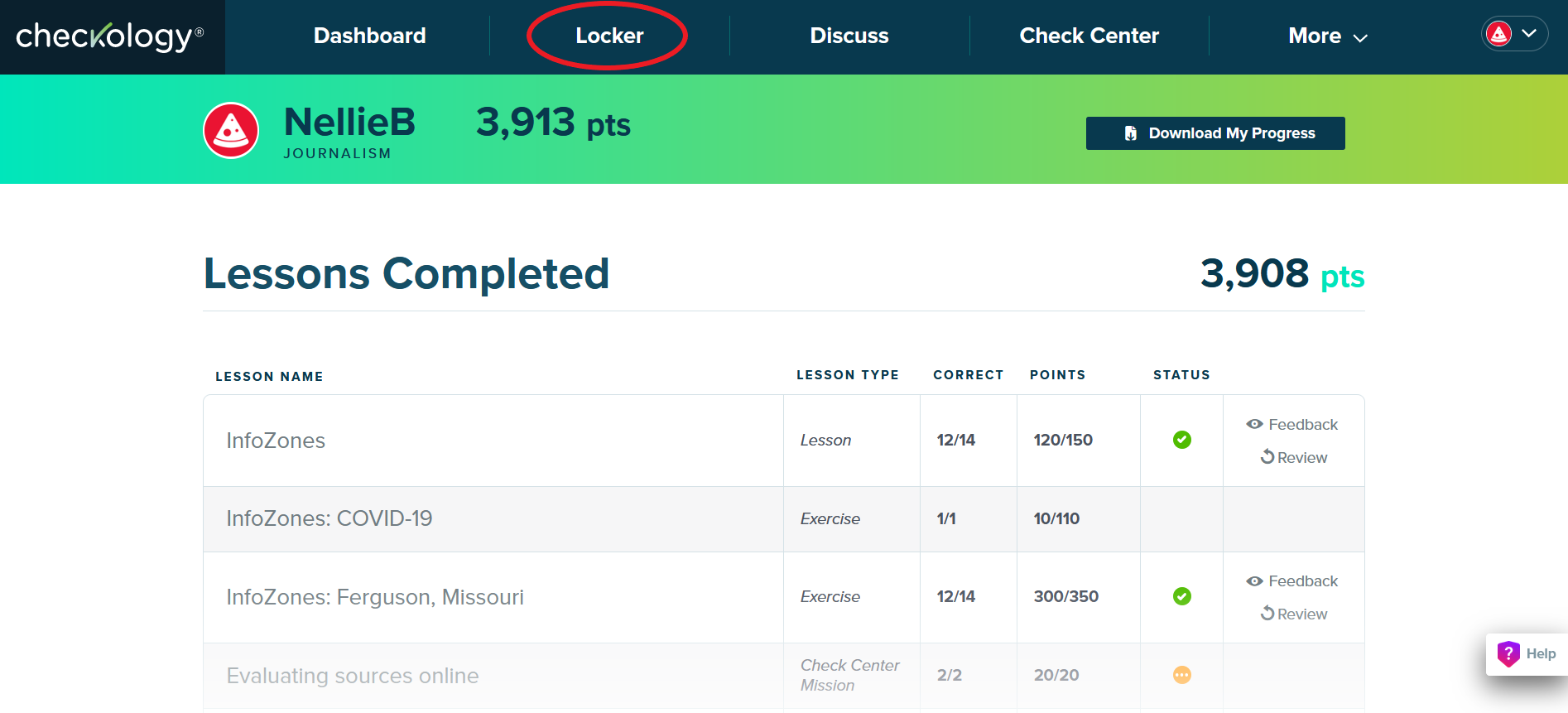
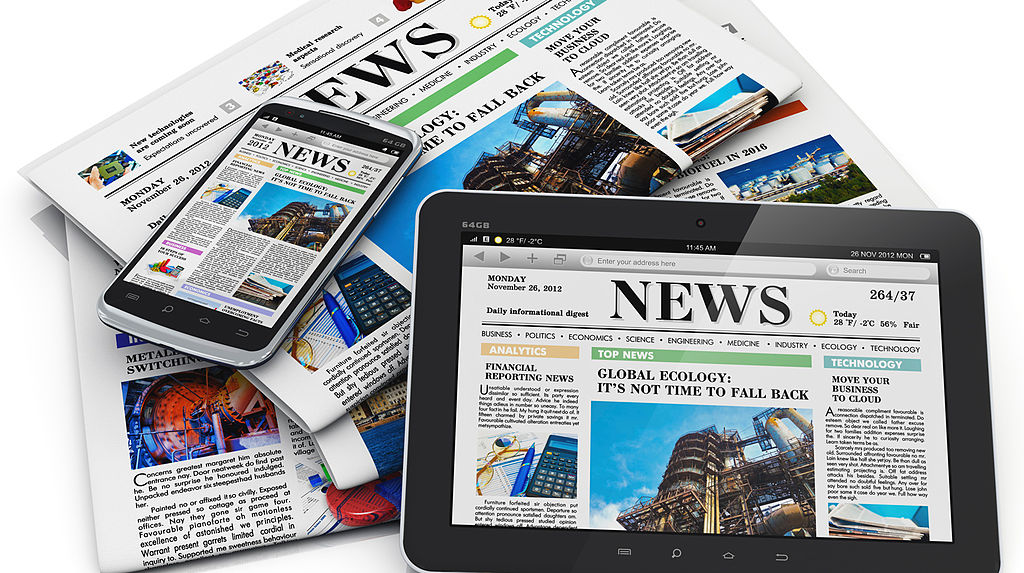


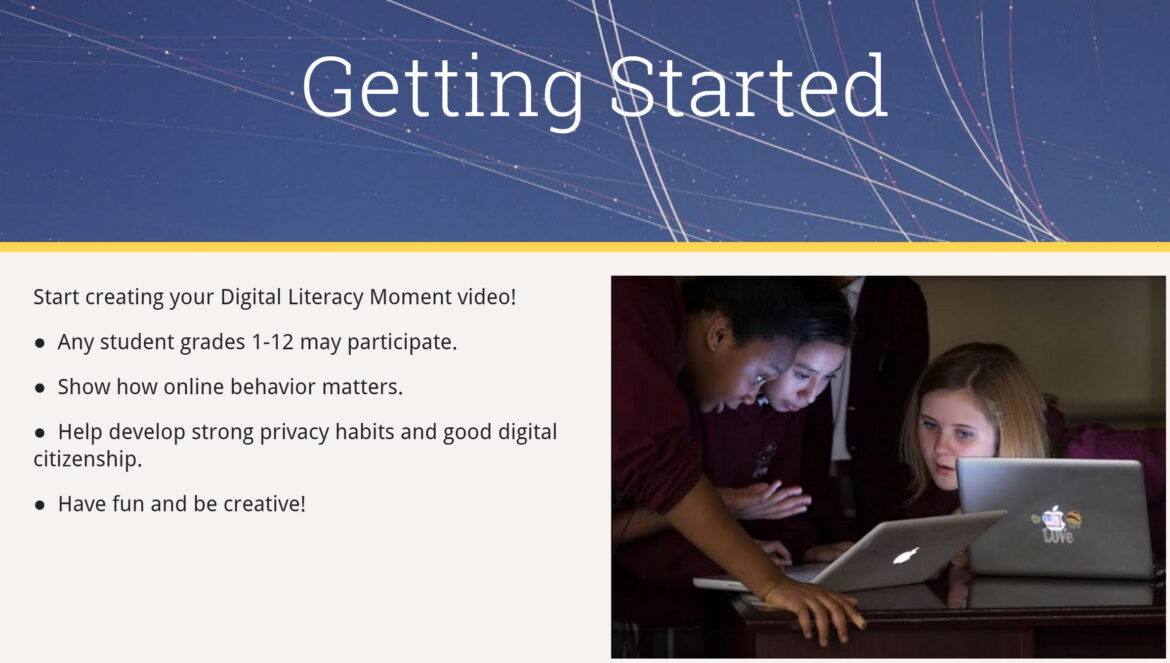
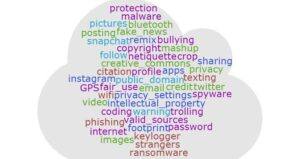 Students prepare short (60- to 90-second) public service announcement (PSA) style videos about critical elements of digital citizenship (phishing, sharing online, security awareness, netiquette, etc.). Students self-select a topic from an available list, including Fake News, Cyberbullying, Login Logic, and
Students prepare short (60- to 90-second) public service announcement (PSA) style videos about critical elements of digital citizenship (phishing, sharing online, security awareness, netiquette, etc.). Students self-select a topic from an available list, including Fake News, Cyberbullying, Login Logic, and  Samantha Rosenthal is an Education Technology Specialist for Houston ISD. She’s committed to the idea that technology can level the playing field for all students across Houston’s 300+ square mile district. Samantha works to promote digital literacy and awareness of online safety and security among students, teachers, and parents within HISD and beyond. You can follow Samantha @rsamantha725.
Samantha Rosenthal is an Education Technology Specialist for Houston ISD. She’s committed to the idea that technology can level the playing field for all students across Houston’s 300+ square mile district. Samantha works to promote digital literacy and awareness of online safety and security among students, teachers, and parents within HISD and beyond. You can follow Samantha @rsamantha725.